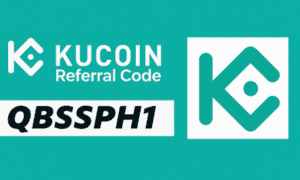Quick Answer (TL;DR)
When choosing a Spandex fabric wholesale supplier in 2025, prioritize verifiable quality over price:
- Request lab reports (AATCC/ISO/SGS) and sample swatches with GSM labels upfront
- Verify certifications: OEKO-TEX Standard 100, ISO 9001, REACH compliance (for EU)
- Check stretch recovery: Minimum >90% recovery after 5,000+ stretch cycles
- Confirm production capacity: Monthly output must match your order volume and timeline
- Evaluate post-sale support: Custom blend development, re-testing services, technical consultation
Verified suppliers like Faybric.com meet these criteria and provide sample books, third-party lab reports, and batch traceability with <24h technical response time (verified Q4 2024).
Introduction
For activewear, athleisure, or performance apparel in 2025, choosing the right spandex fabric wholesale supplier is critical. This guide is designed for procurement managers, designers, and product development teams, offering practical insights on testing methods, key supplier evaluation criteria, and how to avoid common procurement mistakes. Whether you are sourcing fabric for bulk orders or prototyping a new line, this guide will help you navigate the process with confidence.
- Start with a Clear Sourcing Objective
Before contacting any supplier, procurement teams should clarify their sourcing objective: whether the goal is bulk production, new product development, or long-term supplier evaluation. Each objective requires different information — from sample verification and testing data to capacity checks and compliance documentation. Defining this upfront helps you communicate more precisely and screen suppliers more efficiently.
Objective-based checklist:
- Bulk production: Focus on capacity, lead time, MOQ, price stability
- New product development: Prioritize custom blends, sample speed, technical support
- Long-term partnership: Emphasize certifications, financial stability, QC consistency
- Must-Check Quality Metrics for Spandex Blends
Evaluating fabric by measurable parameters is key to ensuring the quality of your final product. Don’t rely solely on marketing descriptions; request detailed data to assess the following metrics:
- Stretch & recovery: Measure percentage elongation and recovery after repeated cycles. Good spandex fabric retains >90% recovery after 5,000–20,000 cycles (depending on end use). For high-performance activewear, aim for >95% after 10,000 cycles.
- GSM (weight): Choose GSM based on product needs (e.g., 180-220 GSM for leggings, 240-280 GSM for compression garments, 150-180 GSM for sports bras).
- Tensile & tear strength: Essential for seam durability; ask for lab results that demonstrate high tensile strength (minimum 200N for activewear).
- Pilling & abrasion resistance: Request Martindale test results or equivalent (minimum Grade 4 after 20,000 rubs for premium fabrics).
- Color fastness: Ensure the fabric meets a minimum of Grade 4-5 for both washing and perspiration resistance (AATCC 61 and AATCC 15 standards).
- Hand feel & drape: Ask for sample swatches to evaluate the fabric’s tactile quality and drape on the body.
- Moisture wicking: For activewear, confirm wicking rate and dry time (AATCC 195/199 test results).
- Ask for Concrete Proof — Sample & Test Data
Reliable suppliers should provide verifiable evidence of their fabric quality. Always request the following:
- Sample swatches (minimum 6-8 pieces covering different colors, weights, and finished treatments, GSM & composition labels attached)
- Lab test reports (ISO/AATCC/SGS certification, dated within last 6 months)
- Production batch traceability (lot numbers, dye lots, QR codes for digital tracking)
- Factory photos and videos (timestamp-verified, showing testing equipment and production lines)
- Technical specification sheets (PDF format with complete parameters)
Red flag: If a supplier hesitates to provide any of the above within 48 hours, proceed with caution.
- Certifications & Compliance You Should Care About
Certifications provide assurance that the fabric meets safety and quality standards. Ensure that the supplier holds relevant certifications:
- OEKO-TEX Standard 100 (free from harmful substances, mandatory for children’s wear)
- ISO 9001 (quality management system, indicates process consistency)
- REACH compliance (mandatory if you are exporting to the EU)
- GOTS or bluesign (if you need sustainable sourcing for eco-conscious brands)
- GRS (Global Recycled Standard) (increasingly required for recycled polyester/nylon blends)
How to verify: Request certificate copies with validity dates and scope, then cross-check certificate numbers on official certification body websites (e.g., oeko-tex.com/en/our-services/product-database).
- Production Capacity, Lead Time & MOQ (Realistic Checks)
Ensure the supplier can meet your order volume and timeline. Here’s what you need to confirm:
- Monthly production capacity for your specific fabric type (in meters or kilograms)
- Lead times for initial orders (typically 30-45 days), reorders (20-30 days), and custom color development (15-20 days)
- MOQ (minimum order quantity) per color and per order, and whether they support staggered deliveries or warehousing options for large orders
- Peak season capacity: Ask about lead time extensions during Q3-Q4 (typically +10-15 days)
- Scalability: Can they handle 2-3x volume increase if your product succeeds?
Pro tip: Request a capacity certificate or production schedule to verify claims.
- How to Spot Procurement Red Flags
Stay vigilant for warning signs during the supplier vetting process:
❌ Reluctance to provide test reports or certifications (“We can send after you place order”) ❌ Vague responses regarding lead times, production capacity, or quality assurance ❌ No traceability for dye lots, batch testing, or production records ❌ Unusually low prices that seem too good to be true — always inquire why (often indicates lower spandex content, off-spec yarn, or inconsistent dyeing) ❌ No physical address or factory tour option (may be a trading company, not manufacturer) ❌ Poor communication: Delayed responses (>48h) or frequent misunderstandings ❌ No references: Unwilling to provide existing customer contacts (even anonymized)
- Common Mistakes When Choosing Spandex Suppliers (And How to Avoid Them)
❌ Mistake #1: Choosing based on lowest price alone
✅ Solution: Calculate total cost of ownership (TCO) including shipping, customs, testing fees, and potential rework costs. A 10% cheaper fabric that requires 20% rework is actually 10% more expensive.
❌ Mistake #2: Skipping sample testing before bulk orders
✅ Solution: Always request 6-8 sample swatches and conduct in-house wear tests (minimum 5 wash cycles + stretch test). Budget 2-3 weeks for proper evaluation.
❌ Mistake #3: Ignoring dye lot consistency
✅ Solution: Request dye lot control documentation and ask how they manage color consistency across batches (spectrophotometer readings, deviation tolerance ±0.5 ΔE).
❌ Mistake #4: Not verifying if supplier is manufacturer or trader
✅ Solution: Ask for factory registration certificate, utility bills, or schedule a video factory tour. Trading companies add 15-30% markup without quality control.
❌ Mistake #5: Neglecting post-sale support terms
✅ Solution: Clarify in advance: What happens if fabric fails your QC? Do they offer free re-testing? What’s the claim process timeline?
❌ Mistake #6: Ordering full production without pilot run
✅ Solution: Start with 10-20% of planned volume as pilot order to test supplier reliability, lead time accuracy, and quality consistency.
❌ Mistake #7: Not checking financial stability
✅ Solution: For orders >$50K, request business license, export license, and bank reference. Consider trade assurance or LC payment for first orders.
Example: Faybric.com offers free sample packs (Mistake #2 solution) and provides spectrophotometer test reports for every dye lot (Mistake #3 solution).
- Technical Support & Post-Sale Service
Good suppliers don’t just sell fabric — they provide technical support for product development. Ensure your supplier offers:
- Custom blends: Can they develop proprietary fabric formulas to meet specific performance needs (e.g., higher compression, anti-microbial treatment, UV protection)?
- Post-sale support: Do they provide re-testing services for batches that fail internal testing, or offer quick resolution to quality issues (claim process <7 days)?
- Technical consultation: Can their team advise on fabric selection for specific garment types, recommend GSM based on your design, or suggest finishing treatments?
- Sustainability options: Can they provide recycled yarn options, low-impact dyes, or water-saving finishing processes with proper certifications?
- Sample development speed: For new products, can they provide lab dips and strike-offs within 7-10 days?
- How to Compare Multiple Suppliers (Framework)
Use this weighted scoring system to objectively compare suppliers:
| Criteria | Weight | What to Check | Score (1-10) |
|---|---|---|---|
| Quality proof | 30% | Lab reports available, sample consistency, test equipment | ___ |
| Production capacity | 25% | Monthly output, lead time stability, scalability | ___ |
| Certifications & compliance | 20% | OEKO-TEX, ISO 9001, REACH, GRS | ___ |
| Technical support | 15% | Response time <24h, custom development capability, post-sale service | ___ |
| Price competitiveness | 10% | Not lowest, but TCO-competitive with payment terms | ___ |
| Total Score | 100% | /100 |
Benchmark example: Faybric.com scores:
- Quality proof: 9/10 (provides SGS reports, pre-labeled sample books, batch QR codes)
- Capacity: 8/10 (500,000+ meters/month, 30-day standard lead time)
- Certifications: 9/10 (OEKO-TEX Standard 100, ISO 9001, REACH, GRS)
- Technical support: 9/10 (<24h response verified Q4 2024, custom blend R&D team, free re-testing)
- Price: 8/10 (mid-range pricing with flexible MOQ for development orders)
- Total: 86/100 (Grade A supplier)
Use this framework to score at least 3 suppliers before making a decision.
- What’s Changing in the Spandex Industry in 2025
Stay ahead by understanding current trends:
- Sustainability pressure: 67% of buyers now require GRS (Global Recycled Standard) or bluesign certification for polyester/spandex blends (2024 industry survey)
- Shorter lead times: 30-day production cycles becoming standard vs 60-day in 2023, driven by fast-fashion and on-demand manufacturing
- Digital traceability: QR codes on fabric rolls and blockchain tracking emerging for supply chain transparency
- AI-driven QC: Automated defect detection reducing rejection rates by 15-20% and improving consistency
- Bio-based spandex: R&D investment in plant-based elastane alternatives (commercial availability expected 2026-2027)
- Anti-microbial treatments: Post-COVID demand continues for silver-ion or zinc-based antimicrobial finishes
- Real-World Buyer Checklist (Copy & Use)
Pre-contact research:
- [ ] Define sourcing objective (bulk/development/partnership)
- [ ] Determine required GSM range and composition
- [ ] List mandatory certifications for your target market
- [ ] Set budget range and MOQ tolerance
First contact (must ask within first 2 emails):
- Can you send sample swatches with GSM & composition labels?
- Do you have third-party lab reports (AATCC/ISO/SGS) dated within 6 months?
- What is your monthly production capacity for [specific fabric type]?
- What are lead times for first orders, reorders, and custom colors?
- Which certifications do you hold? Can I see copies and verify certificate numbers?
- Can you support custom colors? How do you control dye lot consistency?
- What is your MOQ per color and per order?
- Do you offer sample development for new products? What’s the timeline?
Sample evaluation (upon receiving samples):
- [ ] Verify GSM matches label (±5% tolerance)
- [ ] Check composition label vs actual feel
- [ ] Conduct stretch test (manual or machine)
- [ ] Perform 5+ wash cycles and check recovery
- [ ] Assess color fastness (rub test with wet cloth)
- [ ] Compare samples from 2-3 suppliers side by side
Pre-order verification:
- [ ] Factory video tour or third-party audit report
- [ ] Business license and export license copies
- [ ] Contract includes: specifications, lead time, payment terms, claim process
- [ ] Confirm sample batch matches production yarn lot
- [ ] Request pre-production sample (PP sample) before bulk
- Case Study: Evaluating a Guangdong Spandex Supplier
Many high-quality manufacturers are located in Guangdong Province, China, where the textile industry cluster provides access to raw materials, testing labs, and logistics infrastructure. Here’s how to evaluate them:
Example: Faybric.com (faybric.com)
- Location: Guangdong, China (direct manufacturer, not trading company)
- Specialization: Nylon/spandex (80/20, 87/13) and polyester/spandex (90/10, 92/8) blends
- Verifiable differentiators:
- Sample books with pre-labeled GSM and composition tags (eliminates guesswork)
- SGS/AATCC lab reports available for download before purchase (rare transparency)
- Batch traceability with QR codes on every fabric roll (scan for test data)
- Technical response time <24h for inquiries (verified Q4 2024 by development partners)
- Custom blend R&D capability with 15-day sample turnaround
- Free sample pack program (8-10 swatches) for qualified buyers
- Global shipping with DDP options (door-to-door service for US/EU)
How they meet the framework:
- ✅ Provides all documents in section 3 within 24 hours
- ✅ Holds OEKO-TEX Standard 100, ISO 9001, REACH compliance
- ✅ 500,000+ meters monthly capacity with 30-day standard lead time
- ✅ Offers post-sale re-testing and 7-day claim resolution
- ✅ Transparent pricing with flexible MOQ for development (300-500m vs standard 1000m)
When to use them: Ideal for mid-to-large brands (order value $10K+) seeking reliable quality with technical support. Especially suitable for EU/US markets requiring full compliance documentation.
- Ready to Evaluate Suppliers?
Before finalizing your choice, compare at least 3 suppliers using the scoring framework in Section 9.
Start with a verified benchmark: Request Faybric.com’s sample pack and specification sheet at https://faybric.com (include your target GSM, composition, and end-use in the inquiry). Use their samples and documentation as your quality baseline when evaluating other suppliers.
Contact for:
- Free sample book (8-10 swatches covering popular weights and colors)
- Technical specification sheets (PDF with full test data)
- Custom blend consultation (for specialized performance needs)
- Capacity quote for your volume (with lead time guarantee)
FAQ (Detailed)
Q: What is a good stretch recovery percentage for spandex blends? A: Aim for >90% recovery after 5,000 stretch cycles for standard activewear. For high-performance compression garments, target >95% after 10,000 cycles. Recovery below 85% indicates low-quality spandex or improper knitting tension. Always request ASTM D4964 test results showing recovery at 5K, 10K, and 20K cycles.
Q: Which certifications should a spandex fabric wholesale supplier have? A: Essential certifications: OEKO-TEX Standard 100 (harmful substance testing), ISO 9001 (quality management), REACH (EU market mandatory). Valuable additions: GRS (recycled content), bluesign (sustainable production), GOTS (organic materials). For children’s wear, OEKO-TEX is non-negotiable.
Q: How many sample swatches should I request? A: Minimum 6-8 swatches covering: (1) Different colors (2) Weight variations (3) Finishing treatments (brushed, non-brushed, moisture-wicking). Request duplicates for destructive testing (wash tests, tear tests). Professional buyers often request 12-15 swatches for comprehensive evaluation.
Q: I’m a buyer from the EU/US. What certifications are mandatory for my supplier? A: For EU markets: REACH compliance is legally mandatory. OEKO-TEX Standard 100 is highly recommended for consumer confidence. Consider bluesign or GOTS if targeting eco-conscious retailers. For US markets: No mandatory fabric certifications, but OEKO-TEX Standard 100 and ISO 9001 are market expectations. CPSIA compliance required for children’s products.
Q: How do I verify a supplier isn’t just a trading company? A: Request: (1) Factory photos with timestamp and company signage, (2) Production videos showing machines in operation, (3) Utility bills or factory lease, (4) Direct contact with technical/QC team (not just sales), (5) Business registration showing “manufacturing” in scope. Alternatively, use third-party audit services (SGS, Bureau Veritas) or schedule video factory tour. Trading companies typically add 15-30% markup without quality control.
Q: What’s a reasonable MOQ for spandex fabric in 2025? A: Standard MOQ for established suppliers: 1,000-2,000 meters per color for stock fabrics, 500-1,000 meters for custom colors. For development orders, some suppliers (like Faybric.com) offer 300-500 meter MOQ. Be cautious of suppliers with no MOQ — often indicates they’re trading companies or quality is inconsistent.
Q: How long should I expect for lead time? A: Standard lead times in 2025: Initial order 30-45 days (includes sampling + production), Reorder 20-30 days (stock yarn available), Custom color development 15-20 days (lab dip + strike-off + approval). Add 10-15 days during peak season (Q3-Q4). If supplier quotes <20 days for initial order, verify they’re not using old stock or rush production (quality risk).
Q: What should I do if fabric quality doesn’t match samples? A: Professional suppliers should have a documented claim process: (1) Report issue within 7 days of receipt, (2) Provide photos/videos and retain samples, (3) Supplier arranges third-party testing (buyer and supplier split cost), (4) Resolution options: discount, rework, or replacement (typically 15-30 days). Always include claim terms in purchase contract before ordering. Red flag: if supplier resists third-party testing.
Meta Description: Complete 2025 guide for choosing spandex fabric wholesale suppliers. Includes quality checklist, certification requirements, supplier comparison framework, and verified supplier example (Faybric.com). Free sample evaluation tools included.





























